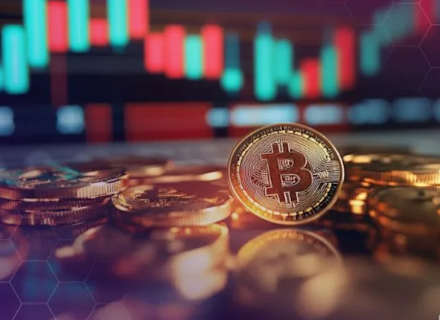Political Power and Crypto: Assessing the Risks and Rewards of Politically Aligned Digital Assets
- Political-aligned cryptocurrencies like TRUMP Token and World Liberty Financial (WLFI) surged in 2025, blending ideology with speculative growth and institutional backing. - WLFI's $550M token sales and USD1 integration highlight hybrid models merging political influence with regulatory credibility, though 60% family control raises governance concerns. - Risks include regulatory gray areas (SEC's 2025 meme coin reclassification) and reputational volatility, as political fortunes or policy shifts could er
The rise of politically aligned cryptocurrencies in 2025 has redefined the landscape of digital asset investment. From meme coins tied to political figures to institutional-grade DeFi platforms backed by high-profile families, the crypto market is increasingly shaped by the interplay of ideology, governance, and speculative fervor. For investors, the question is no longer whether political influence matters—it does. The challenge lies in evaluating whether these projects offer strategic upside or expose portfolios to reputational and regulatory risks.
The Upside: Political Momentum as a Catalyst for Growth
Politically aligned crypto projects thrive on the emotional and financial capital of their backers. The MAGA (TRUMP) Token, for instance, surged by 1,350% during the 2024 U.S. election season, driven by a base of supporters eager to align their investments with a political movement. Similarly, the Official Trump Meme Coin—launched in January 2025—capitalized on the fervor of a post-election victory, with its value tied to the enduring popularity of its namesake. These tokens exemplify how political narratives can drive short-term liquidity and speculative gains.
Institutional backing further amplifies this potential. World Liberty Financial (WLFI), a DeFi platform controlled by the Trump family, raised $550 million through governance token sales, with a 60% stake held by the family. Its upcoming launch in September 2025, supported by $1.5 billion in institutional investments from firms like DWF Labs and Aqua One Fund, positions it as a hybrid of political influence and financial infrastructure. WLFI's tokenomics—featuring a community-governed unlock of 80% of its supply—aim to balance growth with stability, while its integration with USD1, a U.S. Treasury-backed stablecoin, adds a layer of regulatory credibility.
The Risks: Reputational and Regulatory Landmines
However, the same factors that drive growth also introduce significant risks. Politically aligned tokens are inherently volatile, as their value is often tied to the fortunes of a single individual or movement. A scandal, legal challenge, or policy shift can erase gains overnight. The TRUMP Meme Coin ETF, proposed by Canary Capital Group, highlights this tension. While it could pioneer institutional adoption of politically linked tokens, its approval hinges on the SEC's evolving stance on meme coins. The agency's 2025 reclassification of most meme coins as non-securities created a regulatory gray area, leaving projects like TRUMP Coin vulnerable to anti-fraud investigations.
Reputational risk is equally pressing. Investors in World Liberty Financial or American Bitcoin Mining must weigh their alignment with the Trump brand against potential backlash from a polarized public. For example, if the Trump administration's pro-crypto executive order (which permits cryptocurrencies in 401(k) plans) faces reversal in a future administration, WLFI's value could plummet. Similarly, the Climate Action Token, while ideologically driven, risks marginalization in a market where regulatory clarity and utility often outweigh political alignment.
Strategic Investment Considerations
For investors, the key is to balance speculative potential with risk mitigation. Here are three actionable strategies:
Diversify Across Political and Non-Political Tokens: Allocate a portion of your portfolio to politically aligned projects while maintaining exposure to more neutral assets like Ethereum (ETH) or USD-backed stablecoins. This reduces overexposure to the volatility of any single political narrative.
Monitor Regulatory Developments: The SEC's 2025 policy shifts and the Trump administration's pro-crypto agenda have created a favorable environment for politically aligned tokens. However, future regulatory actions—such as a ban on politically themed tokens or stricter anti-fraud enforcement—could disrupt the market. Track legislative updates and SEC enforcement trends closely.
Prioritize Utility and Governance: Projects like World Liberty Financial and Climate Action Tokens offer more than speculative value; they integrate governance mechanisms and real-world use cases (e.g., voting on eco-friendly initiatives). These features can insulate tokens from the whims of political cycles.
Conclusion: Navigating the Political-Crypto Nexus
The 2025 crypto market is a testament to the power of political influence. Projects like the TRUMP Token and World Liberty Financial demonstrate that political alignment can unlock liquidity, media attention, and institutional backing. Yet, these advantages come with inherent risks—regulatory uncertainty, reputational exposure, and the fragility of political narratives.
For investors, the path forward lies in strategic diversification, rigorous due diligence, and a nuanced understanding of the interplay between politics and markets. While the speculative upside of politically aligned tokens is undeniable, the long-term success of these projects will depend on their ability to adapt to regulatory shifts and deliver tangible value beyond their political branding.
As the lines between DeFi and traditional finance blur, one thing is clear: the crypto market of 2025 is not just about technology or finance—it's about power. And in that arena, the most astute investors will be those who can navigate both the opportunities and the pitfalls of the political-crypto nexus.
Disclaimer: The content of this article solely reflects the author's opinion and does not represent the platform in any capacity. This article is not intended to serve as a reference for making investment decisions.
You may also like
Mars Morning News | SEC Expected to Issue "Innovation Exemptions" for the Crypto Industry in "About a Month"
The SEC is expected to issue an innovation exemption for the crypto industry. The UK "Digital Assets and Other Property Act" has come into effect. BlackRock's CEO revealed that sovereign wealth funds are buying bitcoin. Bank of America recommends clients allocate to crypto assets. Bitcoin selling pressure is nearing its end. Summary generated by Mars AI. The accuracy and completeness of this summary are still being improved as the Mars AI model continues to iterate.

a16z: Inefficient governance and dormant tokens pose a more severe quantum threat to BTC.
Deep Reflection: I Wasted Eight Years in the Crypto Industry
In recent days, an article titled "I Wasted Eight Years in the Crypto Industry" has garnered over a million views and widespread resonance on Twitter, directly addressing the gambling nature and nihilistic tendencies of cryptocurrencies. ChainCatcher now translates this article for further discussion and exchange.
